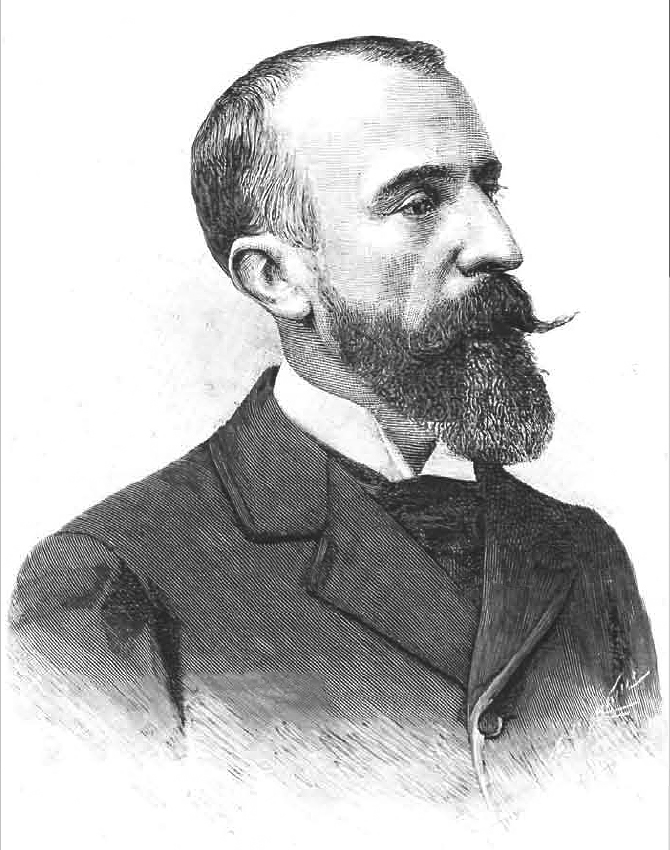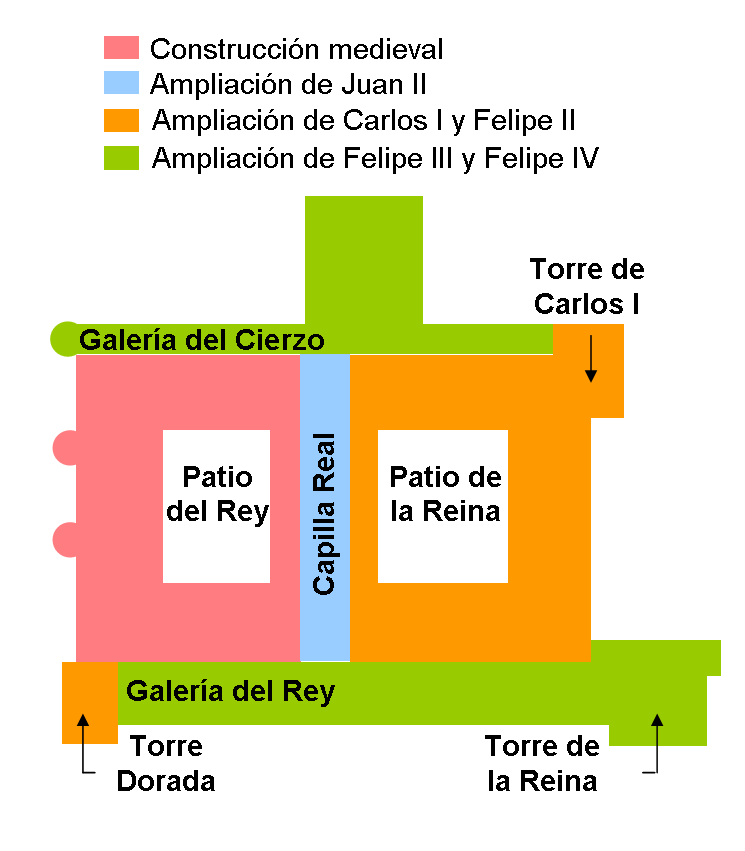|
Enrique María Repullés
Enrique María Repullés, (30 October 1845 – 13 September 1922 in Madrid) was a Spanish architect. He was a member of the Real Academia de Bellas Artes de San Fernando along with Narciso Pascual Colomer and Ricardo Velázquez Bosco. Work in Madrid He was responsible for important buildings in Madrid, such as the neo-classical Madrid Stock Exchange and the neo-mudéjar Iglesia de Santa Cristina (near the Puerta del Ángel) (1904-6). He carried out work in the grounds of the Palacio Real at the Plaza de la Armería and the Campo del Moro. Work outside Madrid He also designed buildings in the provinces such as the Casa Consistorial of Valladolid (1892-1908) and the Basílica de Santa Teresa in Alba de Tormes, Province of Salamanca Salamanca () is a province of western Spain, in the western part of the autonomous community of Castile and León (Castilla y León). It is bordered by the provinces of Zamora, Valladolid, Ávila, and Cáceres, and on the west by Portugal. It h ... [...More Info...] [...Related Items...] OR: [Wikipedia] [Google] [Baidu] |
Enrique María Repullés Y Vargas
Enrique () is the Spanish variant of the given name Heinrich of Germanic origin. Equivalents in other languages are Henry (English), Enric (Catalan), Enrico (Italian), Henrik (Swedish, Danish, and Norwegian), Heinrich (German), Hendrik, Henk (Dutch), Henri (French), and Henrique (Portuguese). Common nicknames of Enrique are Kiki, Kiko, Kike, Rick, Ricky, and Quique. Enrique is also a surname. A variant surname is '' Enriquez'' (son of Enrique). Notable people with the name include: Given name * Enrique of Malacca (fl. 1511–1521), Malay slave who may have been the first person to travel around the world * Enrique Aguirre (born 1979), Argentine athlete * Enrique Álvarez Félix (1934–1996), Mexican actor * Enrique Bolaños (1928–2021), President of Nicaragua from 2002 to 2007 * Enrique Bunbury (born 1967), Spanish singer and band member of Heroes Del Silencio * Enrique Campos (born 1961), Venezuelan road bicycle racer * Enrique Castillo (born 1949), American actor * ... [...More Info...] [...Related Items...] OR: [Wikipedia] [Google] [Baidu] |
Campo Del Moro
Campo del Moro is a park in Madrid, Spain , image_flag = Bandera de España.svg , image_coat = Escudo de España (mazonado).svg , national_motto = ''Plus ultra'' (Latin)(English: "Further Beyond") , national_anthem = (English: "Royal March") , i .... It was designed in the 19th century under the rule of Queen Maria Cristina, thus creating a garden with a clear English style and following the romanticism of nature. One of the difficulties presented by the enormous garden was the difference in height with the Royal Palace, which is why it was not designed before. However, today it is one of the most beautiful landscapes of the Spanish capital. It is named after a 12th century episode in which the Muslim general Ali Ben Yusuf wanted to reconquer Madrid with the death of King Alfonso VI by attacking the Fortress from the banks of the Manzanares River. The Muslim troops occupied this space to settle during the confrontation. References ... [...More Info...] [...Related Items...] OR: [Wikipedia] [Google] [Baidu] |
Spanish Architects
Spanish might refer to: * Items from or related to Spain: **Spaniards are a nation and ethnic group indigenous to Spain **Spanish language, spoken in Spain and many Latin American countries **Spanish cuisine Other places * Spanish, Ontario, Canada * Spanish River (other), the name of several rivers * Spanish Town, Jamaica Other uses * John J. Spanish (1922–2019), American politician * "Spanish" (song), a single by Craig David, 2003 See also * * * Español (other) * Spain (other) * España (other) * Espanola (other) * Hispania, the Roman and Greek name for the Iberian Peninsula * Hispanic, the people, nations, and cultures that have a historical link to Spain * Hispanic (other) * Hispanism * Spain (other) * National and regional identity in Spain * Culture of Spain * Spanish Fort (other) Spanish Fort or Old Spanish Fort may refer to: United States * Spanish Fort, Alabama, a city * Spanish Fort (Color ... [...More Info...] [...Related Items...] OR: [Wikipedia] [Google] [Baidu] |
Province Of Salamanca
Salamanca () is a province of western Spain, in the western part of the autonomous community of Castile and León (Castilla y León). It is bordered by the provinces of Zamora, Valladolid, Ávila, and Cáceres, and on the west by Portugal. It has an area of 12,349 km² and in 2018 had a population of 331,473 people. It is divided into 362 municipalities, 11 comarcas, 32 mancomunidades and five judicial districts. Of the 362 municipalities, more than half are villages with fewer than 300 people. History The Vettones occupied the areas of the current Spanish provinces of Salamanca and Ávila, as well as parts of Cáceres, Toledo and Zamora. They were a pre-Roman people of Celtic culture. Their numerous archaeological sites exist throughout the province, and several locality names have Vettone origin, some of which are quite important. This is the case of Salamanca (''Salmantica''), Ledesma (''Bletisama'') and Ciudad Rodrigo (''Augustobriga''). Vettone villages were often esta ... [...More Info...] [...Related Items...] OR: [Wikipedia] [Google] [Baidu] |
Alba De Tormes
Alba de Tormes is a municipality in the province of Salamanca, western Spain, part of the autonomous community of Castile and León. The town is on the River Tormes upstream from the city of Salamanca. Alba gave its name to one of Spain's most important dukedoms, who had their ancestral seat in the Castillo de los Duques de Alba. St Teresa of Ávila died at a convent she founded in the town and is buried there. From the 12th to the 19th century, the monastery of San Leonardo was located outside the walls of Alba. Notable people * Fernando Álvarez de Toledo, 3rd Duke of Alba * saint Teresa of Ávila died at Alba * saint John of the Cross * Eloíno Nácar Fúster, priest and Bible translator Pictures See also * Battle of Alba de Tormes In the Battle of Alba de Tormes on 28 November 1809, an Imperial French corps commanded by François Étienne de Kellermann attacked a Spanish army led by Diego de Cañas y Portocarrero, Duke del Parque. Finding the Spanish army in ... [...More Info...] [...Related Items...] OR: [Wikipedia] [Google] [Baidu] |
Valladolid
Valladolid () is a municipality in Spain and the primary seat of government and de facto capital of the autonomous community of Castile and León. It is also the capital of the province of the same name. It has a population around 300,000 people (2021 est.). Population figures from 1 January 2013. The city is located roughly in the centre of the northern half of the Iberian Peninsula's Meseta Central, at the confluence of the Pisuerga and Esgueva rivers before they join the Duero, surrounded by winegrowing areas. The area was settled in pre-Roman times by the Celtic Vaccaei people, and then by Romans themselves. The settlement was purportedly founded after 1072, growing in prominence within the context of the Crown of Castile, being endowed with fairs and different institutions such as a collegiate church, University (1241), Royal Court and Chancellery and a royal mint. The city was briefly the capital of the Habsburg Monarchy between 1601 and 1606. The city then decline ... [...More Info...] [...Related Items...] OR: [Wikipedia] [Google] [Baidu] |
Royal Palace Of Madrid
The Royal Palace of Madrid ( es, Palacio Real de Madrid) is the official residence of the Spanish royal family at the city of Madrid, although now used only for state ceremonies. The palace has of floor space and contains 3,418 rooms. It is the largest royal palace in Europe. The palace is now open to the public, except during state functions, although it is so large that only a selection of rooms are on the visitor route at any one time, the route being changed every few months. An admission fee of €13 is charged; however, at some times it is free. The palace is owned by the Spanish state and administered by the Patrimonio Nacional, a public agency of the Ministry of the Presidency. The palace is on Calle de Bailén ("Bailén Street") in the western part of downtown Madrid, east of the Manzanares River, and is accessible from the Ópera metro station. Felipe VI and the royal family do not reside in the palace, choosing instead the Palace of Zarzuela in El Pardo. The pal ... [...More Info...] [...Related Items...] OR: [Wikipedia] [Google] [Baidu] |
Madrid
Madrid ( , ) is the capital and most populous city of Spain. The city has almost 3.4 million inhabitants and a Madrid metropolitan area, metropolitan area population of approximately 6.7 million. It is the Largest cities of the European Union by population within city limits, second-largest city in the European Union (EU), and its wikt:monocentric, monocentric Madrid metropolitan area, metropolitan area is the List of metropolitan areas in Europe by population, third-largest in the EU.United Nations Department of Economic and Social AffairWorld Urbanization Prospects (2007 revision), (United Nations, 2008), Table A.12. Data for 2007. The municipality covers geographical area. Madrid lies on the Manzanares (river), River Manzanares in the central part of the Iberian Peninsula. Capital city of both Spain (almost without interruption since 1561) and the surrounding Community of Madrid, autonomous community of Madrid (since 1983), it is also the political, economic and c ... [...More Info...] [...Related Items...] OR: [Wikipedia] [Google] [Baidu] |
Iglesia De Santa Cristina
Iglesia may refer to: * Iglesia Department * Iglesia ni Cristo * Iglesia Filipina Independiente , native_name_lang = fil , icon = Logo of the Philippine Independent Church (Aglipayan Church).svg , icon_width = 80px , icon_alt = Coat of arms of the Philippine Independent Church , image ... * Iglesia (Metro Madrid), a station on Line 1 {{disambiguation ... [...More Info...] [...Related Items...] OR: [Wikipedia] [Google] [Baidu] |
Mudéjar
Mudéjar ( , also , , ca, mudèjar , ; from ar, مدجن, mudajjan, subjugated; tamed; domesticated) refers to the group of Muslims who remained in Iberia in the late medieval period despite the Christian reconquest. It is also a term for Mudejar art, which was much influenced by Islamic art, but produced typically by Christian craftsmen for Christian patrons. Mudéjar was originally the term used for Moors or Muslims of Al-Andalus who remained in Iberia after the Christian ''Reconquista'' but were not initially forcibly converted to Christianity or exiled. The word Mudéjar references several historical interpretations and cultural borrowings. It was a medieval Castilian borrowing of the Arabic word ''Mudajjan'' , meaning "subjugated; tamed", referring to Muslims who submitted to the rule of Christian kings. The term likely originated as a taunt, as the word was usually applied to domesticated animals such as poultry. The term Mudéjar also can be translated from Arabic ... [...More Info...] [...Related Items...] OR: [Wikipedia] [Google] [Baidu] |




